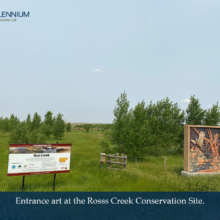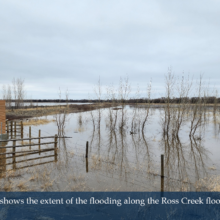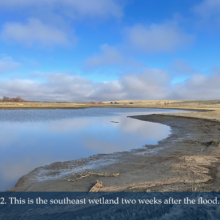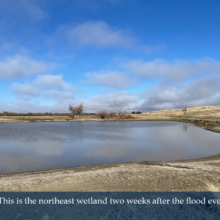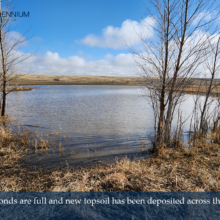Partnership supports creating a new habitat
MEMS was happy to support the Alberta Conservation Association (ACA) and Pheasants Forever (Chinook Chapter) in creating a new habitat for pheasants along Ross Creek near Medicine Hat. MEMS provided the funding application, design, regulatory support and construction supervision in the fall of 2022 for this innovative environmental enhancement project.
Project design leads to restoration
The project restored drainage to valley bottomlands where the overland flow was either blocked or diverted during the initial settlement of the area many years ago. The design included a new flood channel connection to Ross Creek to divert some water by gravity flow onto the floodplain during high flow events, plus new drainage features such as swales and shallow wetlands to improve local soil moisture. The project has downstream flood control benefits but is primarily focused on creating new pheasant wildlife habitat to support the ACA and Pheasants Forever mandates. The Alberta Watershed Resiliency and Restoration Program funded this project.
Project lead Leonard Hanson explained that MEMS design and support were instrumental in the success of the project. When the high-water event occurred in Spring 2023, the excess runoff was redirected to the Ross Creek floodplain as it was designed to do. Water filled the four wetlands, and sediment from upstream farmland was deposited on the floodplain instead of continuing down to the South Saskatchewan River. Reclamation activities continue to occur this spring.
This spring, two of the four wetlands have already produced hatches of ducks and geese and a large Great Blue Herron rookery has been established within 200 meters of the southwest wetland.
Approximately 1600 shrubs have been planted around the wetlands, with more to follow, and a native grass seed mix has been planted on any ground disturbed by last fall’s construction.
“Because of these measures, lush grass growth has occurred on the floodplain at the Ross Creek Conservation Site, and the impact on the water quality downstream was lessened,” stated Leonard. “This project would not have been possible without the great support of the Alberta Conservation Association and its staff from the Lethbridge regional office.”
Project Photos
All photos were taken this spring after the project had been completed. We have provided descriptions for each photo based on the photos going from left to right (photos 1 to 4).
Photo 1 – Shows the extent of the flooding along the Ross Creek floodplain. This view encompasses the Ross Creek Conservation Site and adjoining property.
Photo 2 – This is the southeast wetland two weeks after the flood. This wetland holds the least volume of water as the other three wetlands utilized existing livestock dugouts and therefore have great depths.
Photo 3 – This is the northeast wetland two weeks after the flood event. This wetland captures any runoff from the south-sloping draws.
Photo 4 – Southwest wetland two weeks after the flood. The existing dugout was isolated from livestock for many years, allowing the cottonwoods, willows and cattails to be established before the wetland was expanded in the fall of 2022.
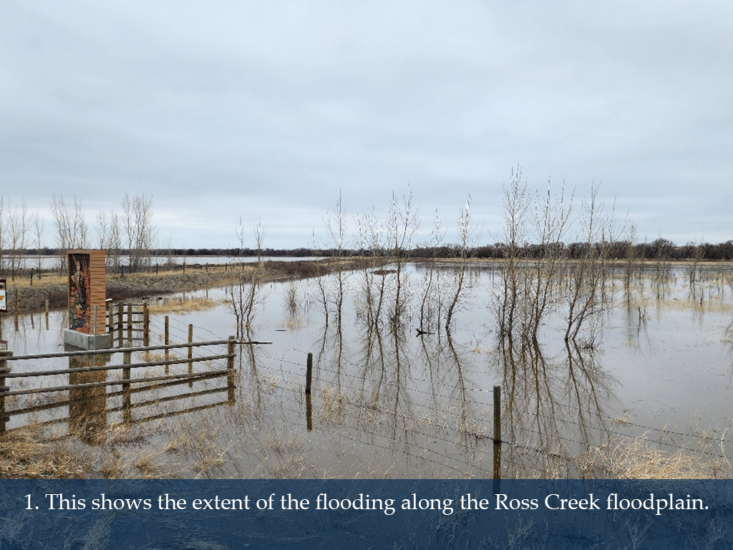
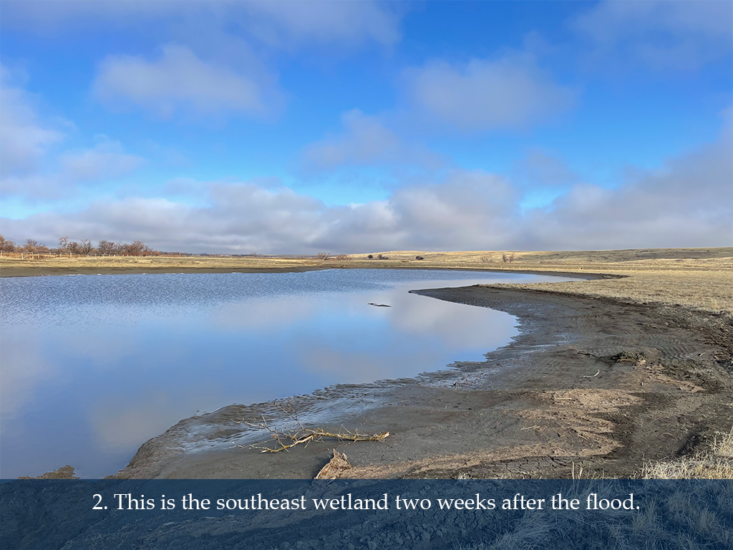
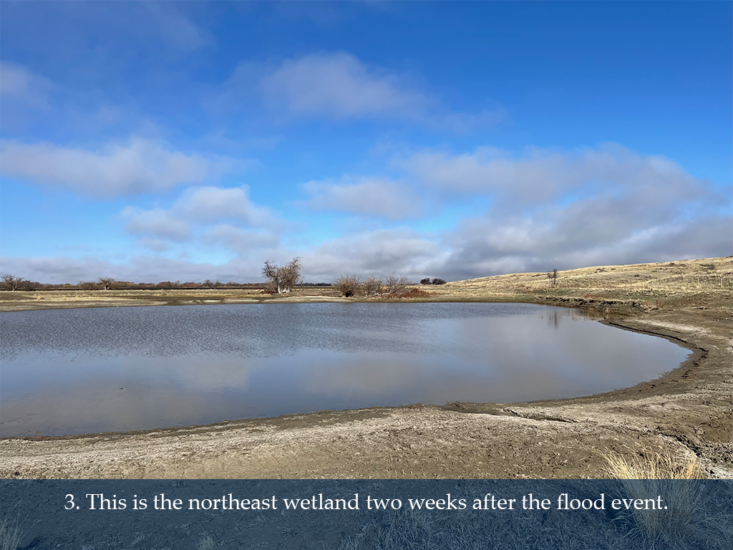
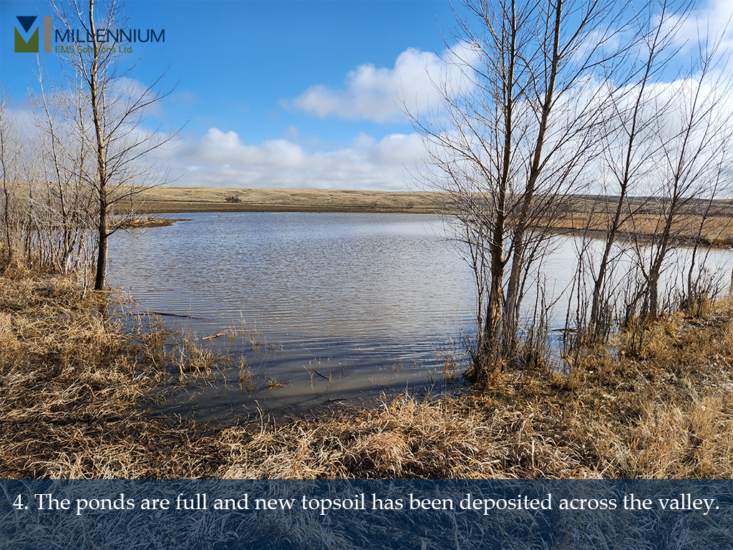
MEMS is proud to deliver our core value of service by contributing to innovative environmental solutions like this.

